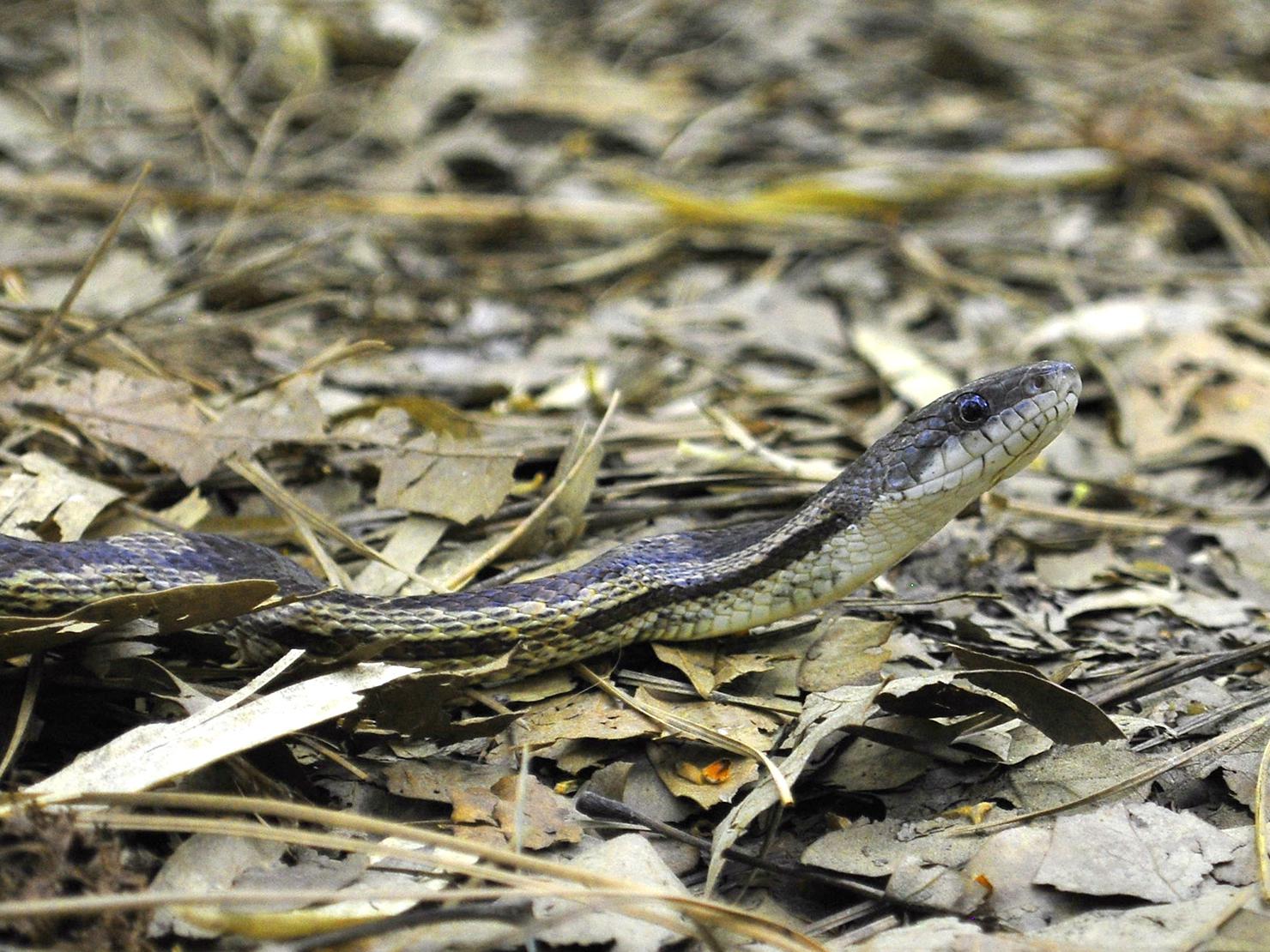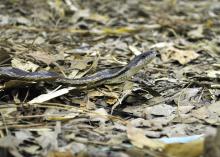Information Possibly Outdated
The information presented on this page was originally released on May 5, 2017. It may not be outdated, but please search our site for more current information. If you plan to quote or reference this information in a publication, please check with the Extension specialist or author before proceeding.
Most Mississippi snakes are beneficial, not deadly
RAYMOND, Miss. -- No other creatures provoke as many conflicting feelings as snakes do. We are attracted and repelled, and we are intrigued by them and ready to kill them, all at the same time. These feelings date back to antiquity.
A major reason many people fear snakes is that some of the reptiles are venomous. Mississippi is home to more than 50 species of snakes, but only six species are venomous. Our venomous species include the Eastern coral snake, copperhead, cottonmouth/water moccasin, pigmy rattlesnake, Eastern diamondback rattlesnake and timber rattlesnake/canebrake rattlesnake. Your chances of being killed by lightning are greater than those of dying from a snakebite.
Odds are great that the snake in your yard is harmless, but how can you be certain? Learn to recognize the venomous species in the state by their coloration, markings and shape of their head and eyes.
For the most part, snakes -- even venomous species -- are a valuable part of our environment. For example, the majority of our larger land-dwelling snakes feed on rodents, while smaller species feed on insects. Thus, snakes provide natural pest control.
Even though venomous species also perform this role, few people would tolerate their presence around the home. If you identify a venomous snake, give it space and allow it to go about its business. Eighty percent of snakebites occur when a human is trying to kill a snake. Always exercise care and avoid the fangs.
Even if the snake is dead, its reflex movement could result in a bite if you handle it carelessly. Nonvenomous snakes, also known as constrictors, can bite if mishandled, but soap, water and an antiseptic should be sufficient treatment.
Granted, snakes are useful, but what if you still want to get rid of them? What can be done to control them? Snake repellents (usually a mixture of sulphur and naphthalene) are very limited in their effectiveness. This means that homeowners must control the environment around their homes to make the areas unattractive to snakes. Keep the lawn mowed and brush piles away from areas that you frequent. These precautions will reduce unwanted visitors.
Snakes have certain requirements that must be met if they are to survive in an area. The most important among the requirements are food, water and cover. When homeowners remove these resources, snake problems, except for transients, should be over. Many people like to have naturalistic homesteads, but they must be willing to accept the presence of unwanted elements of natural communities, including snakes.

Editor’s Note: Extension Outdoors is a column authored by several different experts in the Mississippi State University Extension Service.









